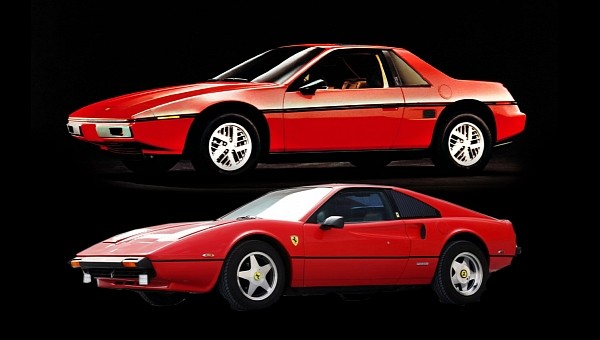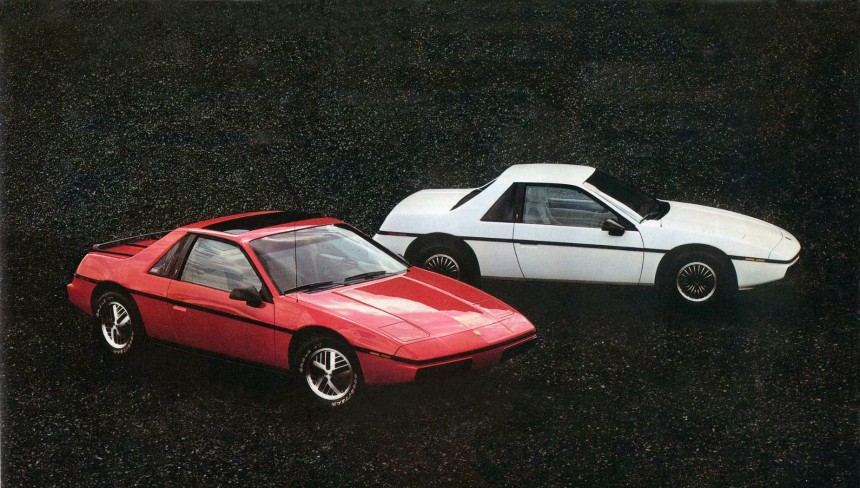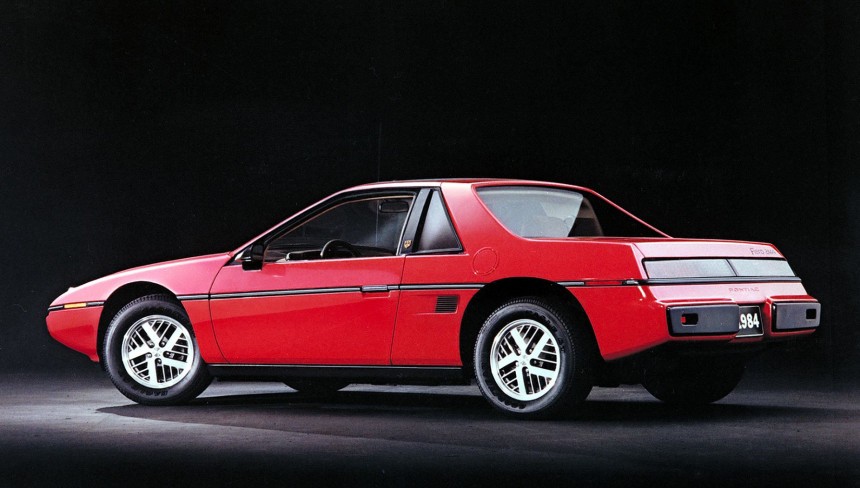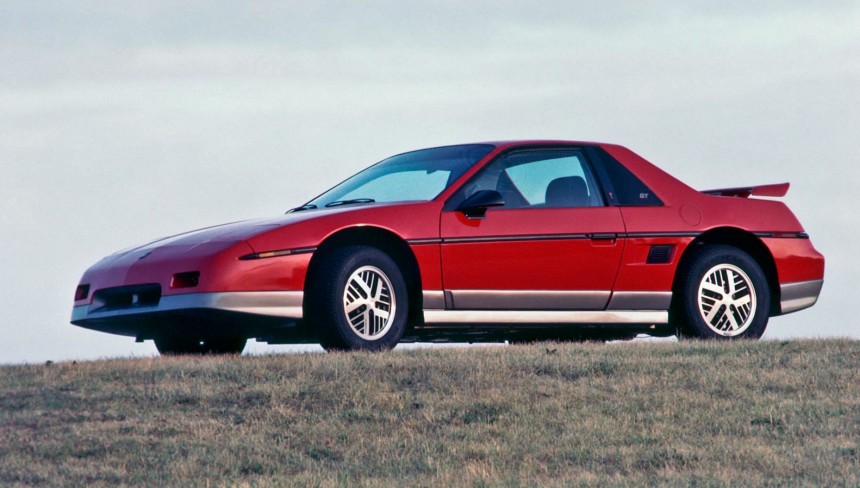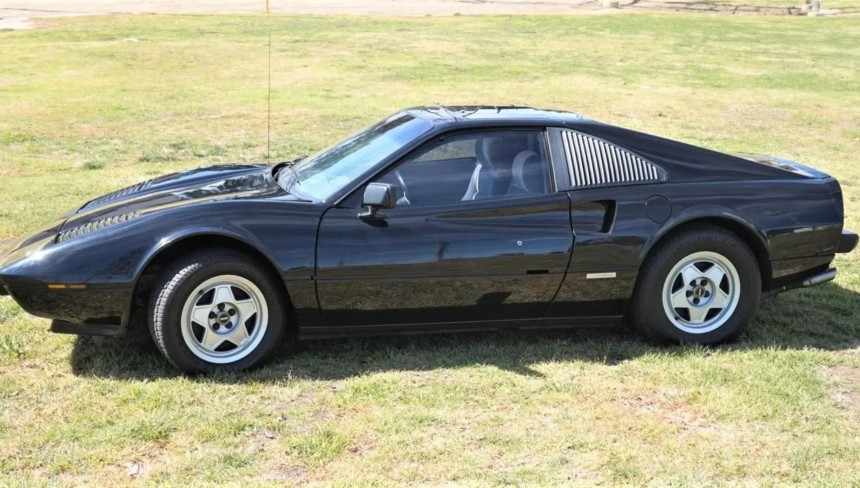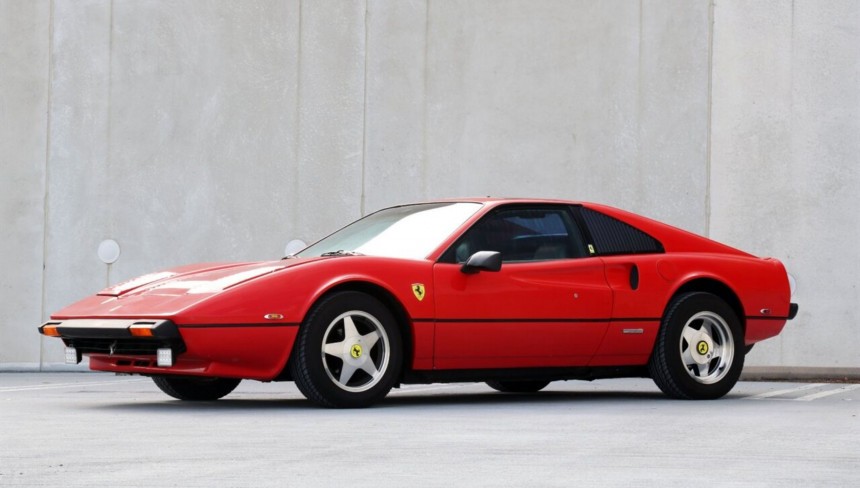A compact, mid-engine sports car meant to reignite public interest in GM’s struggling Pontiac division, the Fiero ultimately failed to deliver. However, it became an unlikely cult hero among those who wanted to own a Ferrari. But didn’t have the money to buy an authentic one.
Discontinued in 2010, Pontiac was one of America’s most legendary automotive names. Though it started as a junior brand for Pontiac, Michigan-based carmaker Oakland Motor Car Company way back in 1926, its most successful period came as a General Motors division during the 1960s.
Marketed as the corporation’s “Excitement Division” during that decade, Pontiac delivered performance-oriented vehicles like the Firebird or GTO, models which defined the original muscle car era.
Unfortunately, the 1973 oil crisis led to an abrupt end of thoroughbred muscle cars, which took most of the excitement out of Pontiac and its most famous models, as well as the entire American automotive industry.
By 1980, the Pontiac was a shadow of its former self. While models like the second-generation Firebird kept the division afloat, stricter emission standards meant that the Firebird’s most powerful iteration was now equipped with a 210-hp V8 - which was far from exciting.
That year, Bill Hoglund was named vice president of Pontiac and his key responsibility was to bring excitement back to the division. But, reviving the high-performance machines of the 1960s was impossible, so Hoglund set out to give new meaning to the “Excitement Division” motto by greenlighting the production of a car that was fundamentally different from anything available on the North American market at the time.
Initially conceived as a pure sports car prototype by a handful of young Pontiac designers and engineers back in the late 1970s, the vehicle that would become the mass-produced Fiero was converted into an affordable, sporty-looking, and fuel-efficient daily commuter.
America’s first mass-produced, mid-engine car and the first Pontiac two-seater in more than four decades, the Fiero began production in August 1983.
Equipped with a 151-ci (2.5-liter), Iron Duke straight-four capable of delivering a little over 90 hp, the car was by no means a rival for the Corvette nor something more powerful than the Firebird, yet it gave the North American market - which lacked anything truly innovative at the time - a completely new vehicle to get excited about.
It was a gamble that initially worked. Hoglund hoped that Pontiac would sell 100,000 units during the first year and much to everyone’s surprise, the division managed to exceed that figure by more than 35 percent.
Although the Fiero was continually developed for the next four years, receiving several upgrades which included a 140-hp V6 (introduced in 1985), or a much-improved suspension design (1988), the sales figures dropped every year, reaching a mere 26,402 units in 1988.
The abrupt downfall of Pontiac’s innovative mid-engine car was the result of multiple factors, including the emergence of similar imports (mainly the Toyota MR2), lack of practicality, as well as the division’s inability to swiftly solve production and logistical issues.
However, the biggest reason why Fiero ultimately failed to become a successful GM model was its habit of catching fire. A serious issue that plagued 1984 modes reportedly occurred in one of every 508 cars sold due to defective connecting rods. By 1987, no less than 20 Fieros caught fire every month, which scared off potential buyers despite Pontiac’s efforts to mitigate the issue.
To keep manufacturing costs at bay and ensure that it was light enough to boost fuel consumption, the Fiero was built around a spaceframe chassis covered with plastic body panels. Enthusiasts soon discovered that they could take the bodywork apart with relative ease and replace it with something a lot more appealing.
One of these enthusiasts was Bob Bracey, the owner of Michigan-based Corporate Concepts who, along with some of his employees, designed a complete body kit that turned the Fiero into a Ferrari 308. It took them around two years of design and clay work to make it happen, but the result turned out to be a precise replica of the beautiful Italian sports car.
It was so good that several Pontiac dealerships struck a deal with Corporate Concepts and offered the re-body as a dealership option which became known as a separate model, the Fierro MERA. The first 88 examples were built in 1987 using brand-new, V6-powered Fierro GTs. These were followed by another 159 cars in 1989, all based on the new Fiero Formula. While the 1987 MERAs retained the Fierro’s stock wheels, the 1988 cars were harder to distinguish from real Ferraris since they were offered with replica 308 wheels cast by Cromadora in Italy.
A MERA sold for about $24,000 to $28,000 ($62,703 to $73,154 today) which was roughly three times more than a stock Fiero, but still almost twice as cheap as a genuine 308.
If you want to learn more about the Fiero MERA, we recommend watching the YouTube video below by Mind Flood Media.
Although not a single MERA was sold with Ferrari badges and the Italian carmaker’s name was never mentioned in promotional ads, there was no denying that the car was a blatant 308 rip-off. As you might expect, the Italian executives were enraged to find out about Corporate Concepts’ conversions. Thus, they sued the company, won, and swiftly put an end to the Fierro MERA.
Still, the original molds were somehow duplicated before being destroyed, and 308 kits continued to pop up on the market. Moreover, many creative enthusiasts who dreamed about driving a Ferrari but never had the funds to buy one have built F40, Testarossa, or F355 replicas based on the Fiero.
Some of these kit cars look cringingly awful but others are hard to distinguish from the real thing. With powerful engine swaps and chassis refinements, these converted Fieros became as thrilling to drive as a genuine Ferrari, which is astonishing considering that the base car was once a failed GM experiment known for reliability issues and poor handling.
Despite its shortcomings, the Pontiac Fiero is currently a classic with a growing cult following, and, much like in the 1980s, it continues to be affordable. Examples in great shape can be had for less than $10,000 while low-mileage models in Concours condition rarely exceeded $20,000.
Ironically, an original Fiero MERA as well as similar Ferrari replicas can be a lot more expensive. However, if you’re looking for such a car and patience is one of your main virtues, you may be able to find an awesome bargain such as this V8-swapped MERA which sold through the Bring a Trailer platform for $23,000 last year.
Marketed as the corporation’s “Excitement Division” during that decade, Pontiac delivered performance-oriented vehicles like the Firebird or GTO, models which defined the original muscle car era.
Unfortunately, the 1973 oil crisis led to an abrupt end of thoroughbred muscle cars, which took most of the excitement out of Pontiac and its most famous models, as well as the entire American automotive industry.
Bringing excitement back to the division
That year, Bill Hoglund was named vice president of Pontiac and his key responsibility was to bring excitement back to the division. But, reviving the high-performance machines of the 1960s was impossible, so Hoglund set out to give new meaning to the “Excitement Division” motto by greenlighting the production of a car that was fundamentally different from anything available on the North American market at the time.
Initially conceived as a pure sports car prototype by a handful of young Pontiac designers and engineers back in the late 1970s, the vehicle that would become the mass-produced Fiero was converted into an affordable, sporty-looking, and fuel-efficient daily commuter.
A successful debut
Equipped with a 151-ci (2.5-liter), Iron Duke straight-four capable of delivering a little over 90 hp, the car was by no means a rival for the Corvette nor something more powerful than the Firebird, yet it gave the North American market - which lacked anything truly innovative at the time - a completely new vehicle to get excited about.
It was a gamble that initially worked. Hoglund hoped that Pontiac would sell 100,000 units during the first year and much to everyone’s surprise, the division managed to exceed that figure by more than 35 percent.
The Fiery Downfall
The abrupt downfall of Pontiac’s innovative mid-engine car was the result of multiple factors, including the emergence of similar imports (mainly the Toyota MR2), lack of practicality, as well as the division’s inability to swiftly solve production and logistical issues.
However, the biggest reason why Fiero ultimately failed to become a successful GM model was its habit of catching fire. A serious issue that plagued 1984 modes reportedly occurred in one of every 508 cars sold due to defective connecting rods. By 1987, no less than 20 Fieros caught fire every month, which scared off potential buyers despite Pontiac’s efforts to mitigate the issue.
Becoming a Ferrari replica
One of these enthusiasts was Bob Bracey, the owner of Michigan-based Corporate Concepts who, along with some of his employees, designed a complete body kit that turned the Fiero into a Ferrari 308. It took them around two years of design and clay work to make it happen, but the result turned out to be a precise replica of the beautiful Italian sports car.
It was so good that several Pontiac dealerships struck a deal with Corporate Concepts and offered the re-body as a dealership option which became known as a separate model, the Fierro MERA. The first 88 examples were built in 1987 using brand-new, V6-powered Fierro GTs. These were followed by another 159 cars in 1989, all based on the new Fiero Formula. While the 1987 MERAs retained the Fierro’s stock wheels, the 1988 cars were harder to distinguish from real Ferraris since they were offered with replica 308 wheels cast by Cromadora in Italy.
A MERA sold for about $24,000 to $28,000 ($62,703 to $73,154 today) which was roughly three times more than a stock Fiero, but still almost twice as cheap as a genuine 308.
If you want to learn more about the Fiero MERA, we recommend watching the YouTube video below by Mind Flood Media.
Ferrari put an end to the MERA, but the replica frenzy continued
Still, the original molds were somehow duplicated before being destroyed, and 308 kits continued to pop up on the market. Moreover, many creative enthusiasts who dreamed about driving a Ferrari but never had the funds to buy one have built F40, Testarossa, or F355 replicas based on the Fiero.
Some of these kit cars look cringingly awful but others are hard to distinguish from the real thing. With powerful engine swaps and chassis refinements, these converted Fieros became as thrilling to drive as a genuine Ferrari, which is astonishing considering that the base car was once a failed GM experiment known for reliability issues and poor handling.
Despite its shortcomings, the Pontiac Fiero is currently a classic with a growing cult following, and, much like in the 1980s, it continues to be affordable. Examples in great shape can be had for less than $10,000 while low-mileage models in Concours condition rarely exceeded $20,000.
Ironically, an original Fiero MERA as well as similar Ferrari replicas can be a lot more expensive. However, if you’re looking for such a car and patience is one of your main virtues, you may be able to find an awesome bargain such as this V8-swapped MERA which sold through the Bring a Trailer platform for $23,000 last year.
